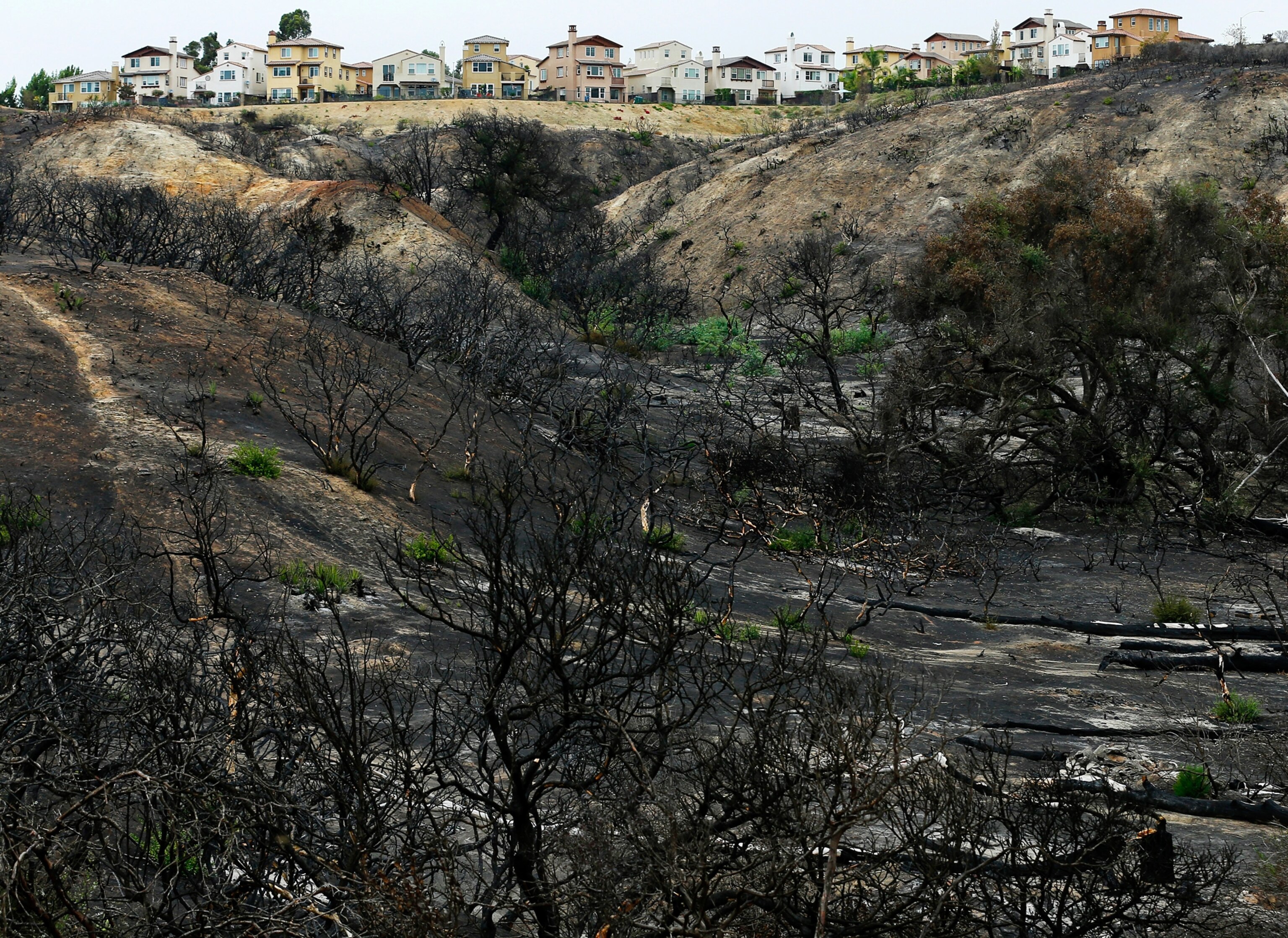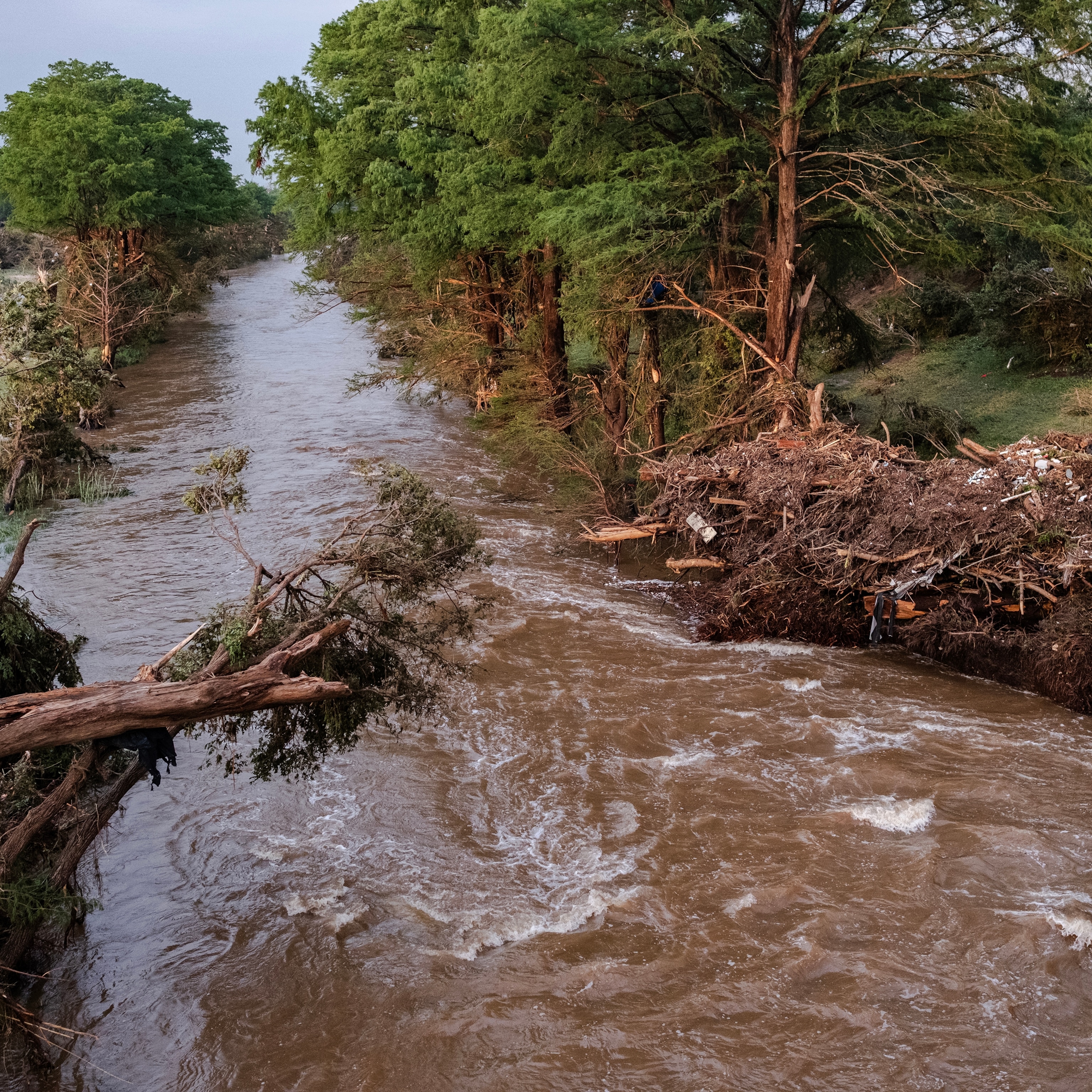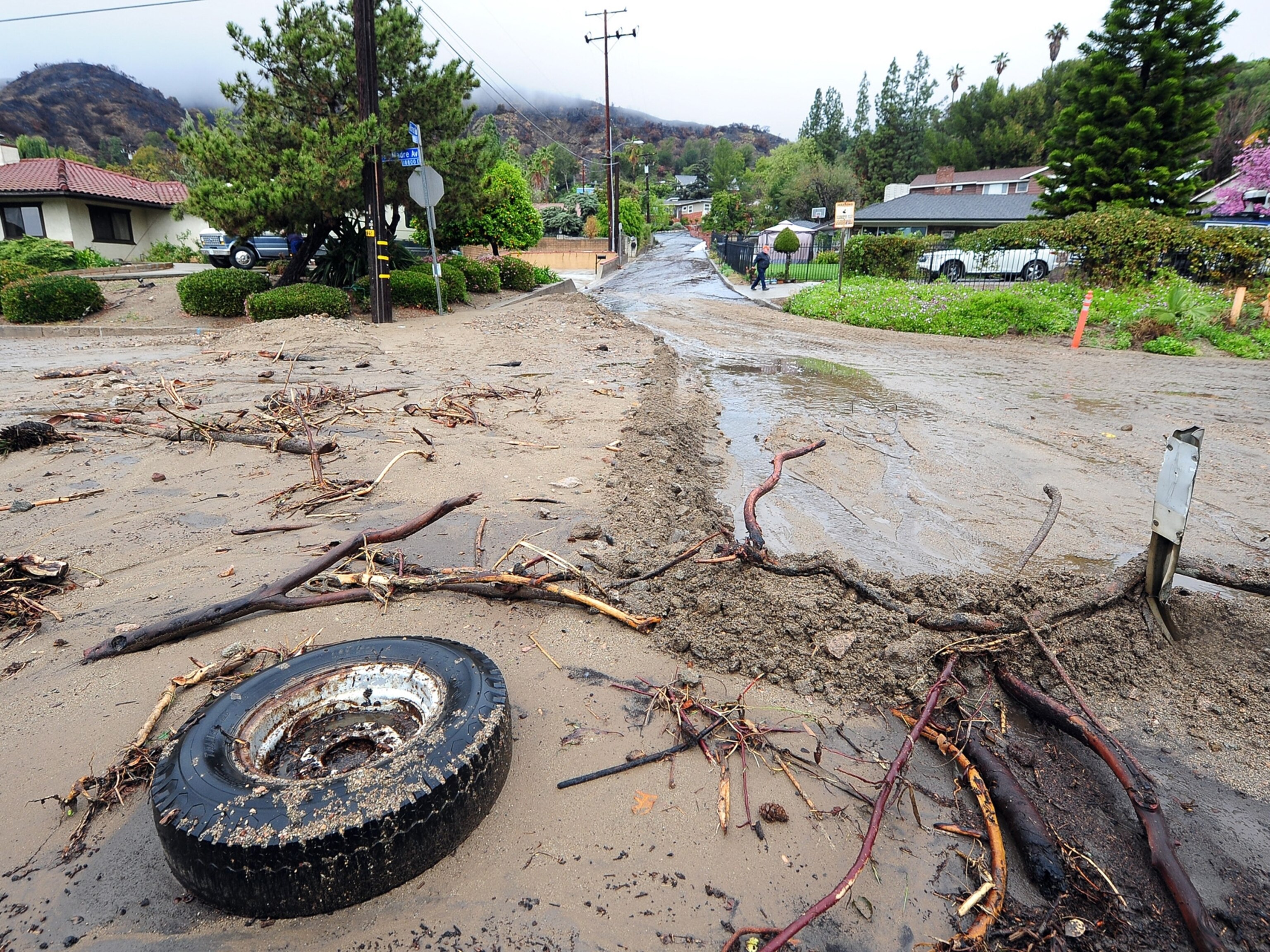
Hard California Rains Provide Little Relief From Record Drought
Amid fears of flooding and mudslides, this week's rain is only drop in dry bucket.
Rain has been soaking much of California this week, but the inches of much needed water are only a drop in the bucket amid the worst drought in the state's recorded history, experts warn.
"The rain is welcome—it sure helps—but one good storm is not enough," says Jeffrey Lorens, a meteorologist with the National Weather Service's Western Region. "We're still in a drought, and we will be for some time."
The rain threatens many areas of California with floods and mudslides, largely because of recent damage from wildfires spurred by the drought and by higher than normal heat.
Although the drought is far from over, the rain is already bringing some benefits, says Daniel Swain, a climate scientist at Stanford. The wildfire season has officially come to an end, he says. Grasses are sprouting in northern California, which didn't happen until as late as February last year. Wildlife and local watersheds are getting a break.
Rains that began on Monday and are expected to continue until Wednesday night or Thursday morning have already soaked most of the state with at least one inch of water, says Lorens.
He forecasts that most of the state will receive up to two inches of rain by the time the storm ends, while some spots in coastal mountains will see up to seven inches.
It seems impressive, but when it comes to rain, the state has a lot of catching up to do. The past few years have been so dry that most of the state is behind on precipitation by one to two years. This three-year period is being called the worst drought in the state's recorded history.

'A Long Way Off From Making a Dent'
November typically ushers in the wet season in California, but last month saw only 70 percent of the normal amount of precipitation.
San Francisco, for instance, is 27 inches (69 centimeters) of rain below normal levels this year. Los Angeles is 25 inches (64 centimeters) below normal, and San Diego is 13 inches (33 centimeters) below normal, according to Jan Null, a meteorologist who runs the consulting company Golden Gate Weather Services.
As a result of the dry conditions, most of the state's reservoirs are far below normal, with some as low as 5 percent of capacity.
That the ground has been so dry means that much of this week's rainwater has soaked into the ground, where it will eventually start to refill reservoirs or recharge groundwater.
Most water managers estimate that the state needs to see about 150 percent of normal rainfall in a given year to get out of the drought, says Null, who spent more than two decades with the National Weather Service in California.
"We're at the point where every inch of rain is beneficial, but we've had a severe deficit over the past three years," he says.
Every inch of rain in San Francisco erases only 3 percent of the city's recent deficit. "That means we don't have to make up every inch, but we're still a long way off from making a dent," says Null. (Learn more about the water crisis.)
Some relief may be on the way, with NOAA's three-month estimate predicting above normal precipitation for most of California.
The fast falling rain of recent days has elevated the risk of floods and mudslides in some areas. "Where we may begin to see some problems is below some steep slopes," Lorens notes.
Areas that had recently faced wildfires are also at increased risk for mudslides. That includes parts of the Sierra Nevada and the mountains around Los Angeles. Fire removes vegetation that otherwise absorbs precipitation, and it can leave a crust on the soil that makes water run off quickly.
Result of Changing Climate?
The drought has been driven by an unusual weather system over the ocean, likely exacerbated by climate change. Contributing to the dryness, this year is also shaping up to be the hottest on record in California, Swain says.
A key cause of the drought and heat, he says, has been a high pressure system, or "ridge," that was parked over the Pacific off the California coast. That system blocked storms from coming onshore. (Swain's Stanford colleagues published a study in September concluding that human-induced climate change has made that ridge much more likely.)
The ridge dissipated by late November and has been replaced by a low-pressure system, which has allowed rains to sweep in from the ocean, says Swain. The water off California has been warmer than usual, which is adding to the moisture available.
So far, however, the overall Pacific system does not resemble a typical El Niño, the pattern of heat transfer that drives large-scale weather changes and normally means more rain on the U.S. West Coast. What's happening on the coast could turn into an El Niño, but it's not one yet, because the Pacific waters are unusually warm. It takes patches of warm and cold for an El Niño to develop.
Scientists estimates that over the next few months, there is a 50 to 60 percent chance that an El Niño will develop. That would be the first time since 2009-2010, for a phenomenon that tends to occur in cycles of two or seven years.
"But it's important to remember that California is very sensitive to what's going on all around the northern Pacific," says Swain. "El Niño is not a slam dunk for drought relief, even if it does come."








